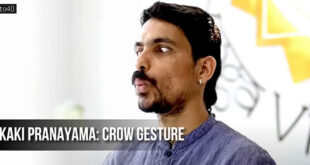Uncovering Relative Truths — The moment we find some answers to questions we have about creation, the euphoria disappears for new questions emerge.
‘Fractals’, discovered by Mandelbrot, are similar patterns repeating themselves at higher orders of dimension. If you magnify a fine area of fractal structure, you get more information in proportion to the new scale. Thus, the world not only looks different to the observer at different scales, it also measures differently. So the deeper your understanding of a complex picture, the more nuances you come to observe. With reductionism, science has made possible deeper access into the microcosm; it is fracturing the tangible to the point of intangibility.
The monochromatic reductionist approach of scientific enquiry may eventually have to metamorphose into a spectrum to throw light on creation. The anthropomorphic principle suggests that intelligent consciousness that could comprehend the universe was the objective of creation. In quantum physics the observer is required to validate the observed. Any phenomenon ceases to exist in the absence of the observer. A strictly epistemological approach may explain the modus operandi of creation but it will fall despicably short of providing a rationale for it.
Science is too egoistic to question its own existence. It is too preoccupied with its own achievements to marvel at the splendour of creation. The conceit of tangibility blinds scientific thought; a veritable train of intelligence chugging along on the track of logic blissfully unaware of why it began the journey in the first place.
Often, rationalist reductionism gives the illusion of uncovering the truth. But this truth is relative to the system attempting to uncover it. The absolute truth includes the seeker. The unbroken wholeness in which, and through which we exist was well captured by Godel in the proof of his celebrated theorem. The first theorem says that for a given system, there will be statements that are true in that system, but that they cannot be proved to be true inside the system. The second theorem says that if a system can be proved to be consistent using its own logic, then there will be a theorem in the system that is contradictory.
This is simply because the system under consideration is organically interconnected with a larger system, which by itself is dissolved into another, greater entity, ad infinitum.
The part can never understand the whole. The search for the elusive Higgs boson particle is in effect the search for what gives matter its tangibility and this is perceived by the intangible consciousness. As the poet put it, beauty lies in the eye of the beholder; tangibility may lie in perception and not be an a priori measurable attribute of the perceived.
Chaos and complexity defeat the idea that the world could be analysed in parts. Parts simply do not exist, for the whole consists of wholes. The Upanishads say: That is complete, this is complete. From that completeness comes this completeness. If we take away this completeness from that completeness, only completeness remains.
The ultimate truth may be a state of oneness as proposed in the advaitic concept of non-duality, an assimilative philosophy that discerns the wholeness of the part. However, scientific enquiry will persist with reductionism of the whole into smaller wholes.
 Kids Portal For Parents India Kids Network
Kids Portal For Parents India Kids Network






